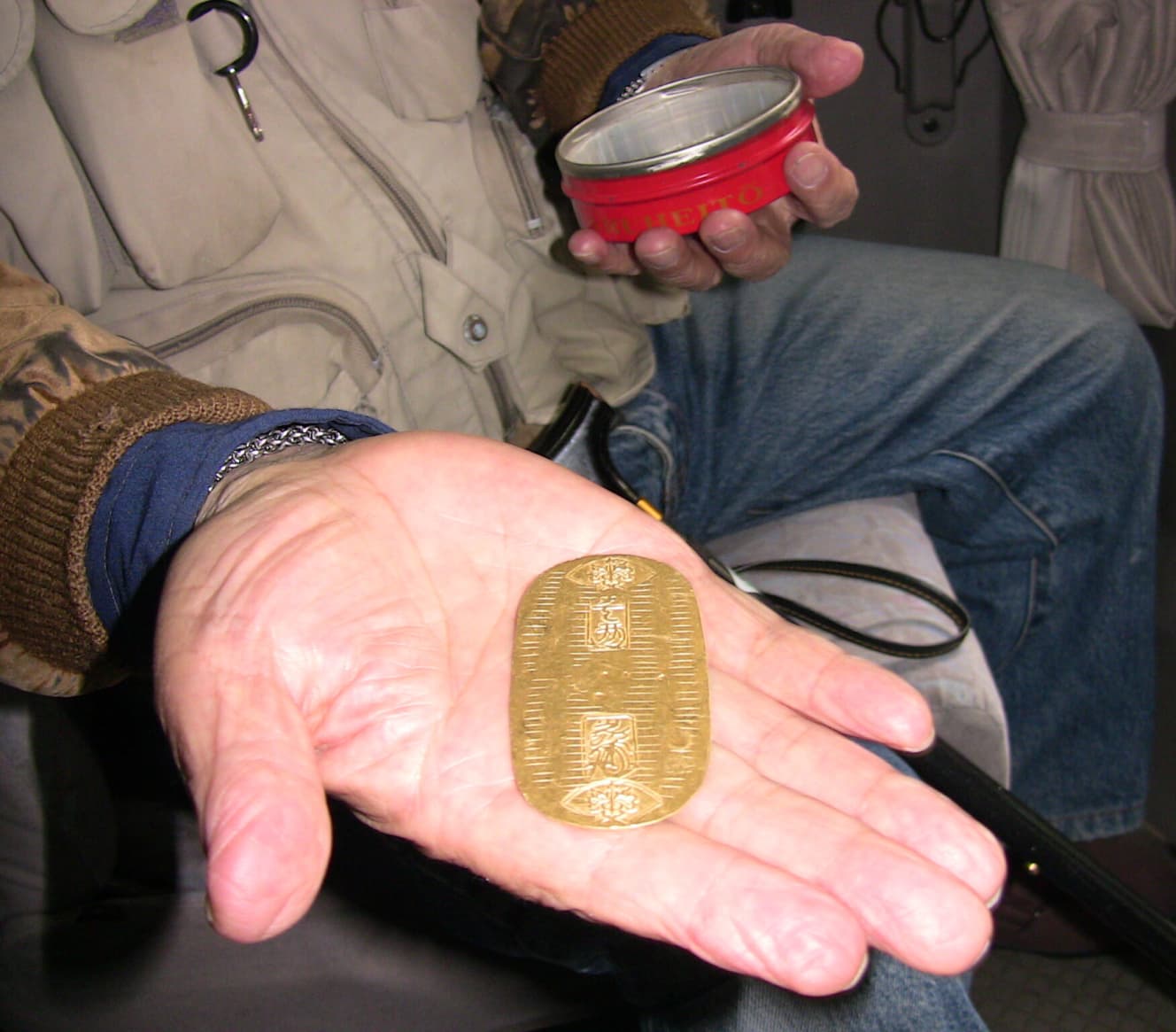Koban Zakzaku in Tateyama, Chiba! Follow the search for buried gold hunters!
Don’t throw trash into the sea!”
Mitsuhiro Yaeno, 75, a gold reserve hunter, said as he grimly picked up a lump of iron that had come out of the ground. The wind was blowing at 10 m/s that day, and a light rain was blowing on his raincoat.
There is a possibility that dozens to hundreds of koban from the late Edo period lie on Shiomi Beach in Tateyama City,” he said. It’s really exciting, like a man’s romance. But, dig after dig, all you find is trash, so from the outside it looks like a volunteer cleanup job (laughs).

In spite of the bad weather, Mr. Yaeno continued to search silently for koban, making full use of the metal detector. It is no wonder he is so fascinated. In fact, a rare and valuable koban has already been discovered on the Shiomi Coast.

In July 2005, a 76-year-old man living nearby discovered a golden Genbun koban (market value about 300,000) buried in the sand while taking a walk on the beach. It was only reported on the local news and did not cause a nationwide commotion. …… The fact that one koban was found means that there is a high possibility that there are still others buried in the sand. That is why I set my sights on this untouched spot on the Shiomi Coast,” Yaeno said.
The Genbun koban was produced in 1736, during the reign of the 8th shogun, Yoshimune Tokugawa, and remained in circulation for 83 years. Why is such a koban buried on the Shiomi Coast? The key to solving this mystery lies in an ancient document. Mr. Yaeno said, “The first koban was found.

It is said that ships carrying large quantities of tribute rice and other goods from the Tohoku region to Edo (present-day Tokyo) used to come and go off the coast of At least three of those ships were sunk. We know that at least three of these vessels sank. I suspect that what was found on the Shiomi Coast may have been koban that drifted ashore from one of the sunken transports. This beach, which juts out like a key nail toward Tokyo Bay, is often washed ashore by drifting debris. It would not be surprising if the koban had drifted ashore from a sunken ship.”
As investigators continued their research, they discovered that one of the three sunken transports may have been carrying large sums of money.
The ship that operated in the area was said in old documents to have carried Nada sake ordered by Kashimaya,” he said. Kashimaya is a sake wholesaler that operated for more than 200 years from the mid-Edo period.’ It is famous for the discovery in 1963 of a buried treasure worth 60 million at that time’s price, or 1 billion yen today. However, what was found here on the Shiomi Coast was not the koban that Kashimaya’s ship was carrying. It may have drifted ashore from the other two ships, or it may have been a more special ship not mentioned in ancient documents” (Yaeno).
Mr. Yaeno began his treasure hunt on the Shiomi Coast in ’14. Even though he expanded the scope of his search, he was unable to find any results. Last year, however, there was a hopeful development. Mr. Yaeno explains.
Last summer, we received a call from someone who had found a second koban. In fact, five or six years ago, a family was swimming at another beach and found a shiny object in an octopus-shaped box. That was the Genbun koban, and the fact that two of them turned up means …… that we have the feeling that we are definitely getting closer to the koban, step by step.”

For the past nine years, Mr. Yaeno has visited Shiomi Beach two to three times a year with his friends to search for koban. They used a metal detector to check the surfaces of the waves, and underwater they surveyed the area visible from the water’s surface. In the future, he says, “I would like to do a full-scale underwater search.

Anyone can safely and casually dig for buried gold on the Shiomi Coast,” Yaeno said. Everyone is welcome to come with their families and friends. I hope the movement to search for buried gold will spread throughout the country,” Yaeno said.
All we found that day was an iron chain and a piece of metal, but if the old documents are correct, there are koban (small gold coins) worth several million yen buried on the Boso Peninsula in Chiba Prefecture.


